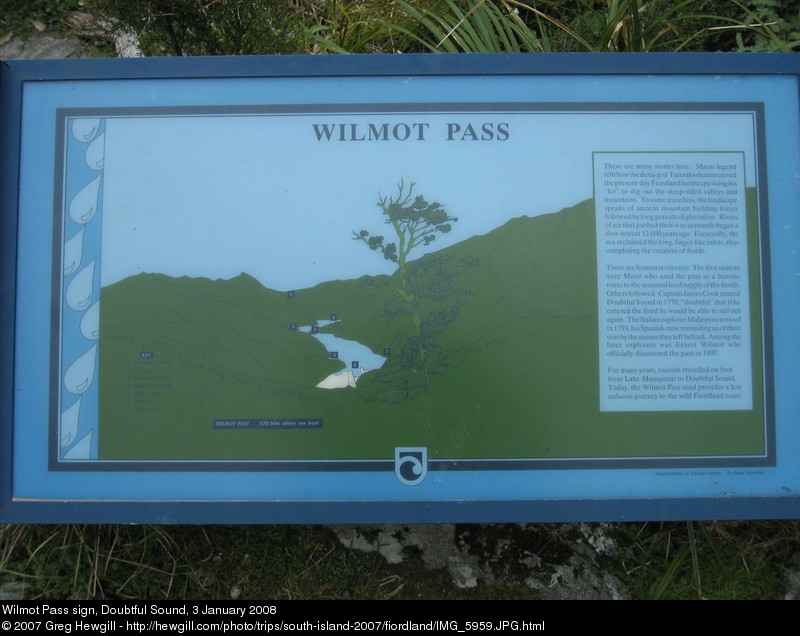
| Prev | Next |

|
|
| Prev | Next |
Wilmot Pass sign, Doubtful Sound, 3 January 2008
There are many stories here. Maori legend tells how the demi-god Tuterakiwhanoa carved the present-day Fiordland landscape using his "ko" to dig out the steep-sided valleys and mountains. To some travellers, the landscape speaks of ancient mountain building forces followed by long periods of glaciation. Rivers of ice that pushed their way seawards began a slow retreat 12,000 years ago. Eventually, the sea reclaimed the long, finger-like inlets, thus completing the creation of fiords.
There are human stories too. The first visitors were Maori who used the pass as a historic route to the seasonal food supply of the fiords. Others followed. Captain James Cook named Doubtful Sound in 1770, "doubtful" that if he entered the fiord that he would be able to sail out again. The Italian explorer Malaspina arrived in 1793, his Spanish crew reminding us of their visit by the names they left behind. Among the later explorers was Ernest Wilmot who officially discovered the pass in 1897.
For many years, tourists travelled on foot from Lake Manapouri to Doubtful Sound. Today, the Wilmot Pass road provides a less arduous journey to the wild Fiordland coast.
Original size: 2592x1944
Timestamp: 2008:01:03 15:27:05
Exposure time: 1/200 s